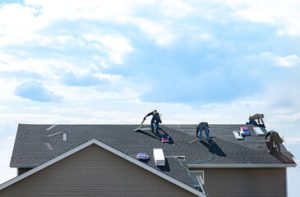A roof protects more than a building. It shelters memories, comfort, and everything that defines home. Roofing is the quiet craft that bridges structure and safety. It has transformed into a balance of design, technology, and sustainability.

Today, roofing extends beyond its traditional role. It now represents energy efficiency, climate adaptation, and architectural identity. Materials and techniques have evolved to meet changing environmental and aesthetic needs. Modern roofs combine engineering precision with environmental consciousness. Visit https://www.cedarparkroofingpro.com to learn more.
Every roofing system starts with understanding its purpose. Some roofs prioritize insulation, while others focus on durability or noise reduction. The best designs merge all these needs into one seamless surface. A roof must not only cover but perform.
Technology has reshaped how roofs are built and maintained. Advanced materials can now regulate temperature, repel moisture, and even generate energy. Smart sensors embedded within roofs monitor structural health. This digital integration makes maintenance proactive rather than reactive.
Climate plays a defining role in roofing choices. Different weather patterns require unique solutions for drainage, heat resistance, and wind stability. Engineers now design roofs that respond to shifting climate trends. Adaptive roofing ensures that safety remains constant despite nature’s unpredictability.
Modern roofing materials are engineered for longevity and sustainability. Lightweight composites, recycled metals, and reflective coatings dominate the market. These innovations reduce environmental impact while extending lifespan. Sustainability and durability now coexist in every design decision.
Energy efficiency is central to contemporary roofing systems. Reflective surfaces reduce heat absorption, minimizing energy consumption. Green roofs, covered in vegetation, improve air quality and thermal regulation. The roof becomes an active participant in energy management.
Architecture has turned roofs into artistic statements. Slopes, patterns, and finishes express the character of a building. What was once a purely functional layer is now part of the design narrative. Roofing merges engineering with visual storytelling.
Noise reduction is another overlooked but vital aspect of roofing. Acoustic insulation within roofing layers softens external sounds. This creates calm environments even in noisy surroundings. A good roof offers not just protection, but peace.
Water management defines the science behind effective roofing. Proper slope, gutter placement, and waterproofing ensure long-term resilience. Modern systems channel rainwater efficiently, preventing leaks and structural decay. The smallest detail can determine a roof’s lifespan.
Maintenance remains the heart of roofing longevity. Regular inspections detect cracks, corrosion, or sealant wear before they escalate. Predictive maintenance now relies on infrared imaging and sensor data. This precision minimizes repair costs and maximizes efficiency.
Safety is an ever-present concern in roofing projects. Technicians undergo rigorous training to handle heights, tools, and materials responsibly. Modern safety gear and harness systems ensure secure installations. Every project begins and ends with human protection.
The roofing industry has also embraced modular construction. Pre-fabricated sections allow faster installation and higher accuracy. This approach reduces waste and construction downtime. Efficiency now defines both the process and the product.
Cultural influences play a subtle yet powerful role in roof design. Regional architecture often dictates the slope, texture, and tone of roofing materials. From flat contemporary roofs to steep traditional ones, style adapts to identity. Roofing reflects not only function but heritage.
Environmental adaptation has driven the rise of cool roofing systems. These designs reflect more sunlight and absorb less heat. The result is a reduction in urban heat islands and energy demand. It’s a small innovation with massive ecological impact.
Roof ventilation continues to evolve as part of modern engineering. Proper airflow beneath roofing layers prevents mold, condensation, and temperature imbalance. Smart ventilation systems now self-adjust based on humidity levels. Comfort and preservation go hand in hand.
The role of roofing extends into renewable energy integration. Many roofs now support solar panels, wind turbines, and rainwater harvesting setups. They become part of the sustainable ecosystem rather than separate from it. The roof transforms from passive cover to active generator.
Aesthetics remain a strong motivation for homeowners and designers alike. Color palettes, textures, and reflective finishes create visual harmony. Roofing is no longer hidden but celebrated as part of the architecture’s beauty. The line between form and function has vanished.
Urban environments challenge roofing in new ways. High-rises demand wind resistance, weight efficiency, and thermal control. Engineers address these through specialized membranes and reinforced frameworks. Every roof becomes a micro-environment of innovation.
Natural disasters have reshaped roofing standards globally. Impact-resistant materials now protect against hail, debris, and extreme winds. Structural anchoring systems prevent lift-off under severe conditions. Resilient roofing represents the merging of engineering and survival design.
Insulation technology has revolutionized roofing performance. Multi-layer composites retain indoor temperatures regardless of external conditions. This innovation enhances comfort while lowering energy costs. Every layer contributes to sustainability.
Roofing artistry continues to thrive in restoration and heritage projects. Specialists carefully replicate historic patterns while upgrading durability. This balance preserves culture without compromising safety. Each restored roof tells a story of legacy and modern mastery.
Noise from rain or debris has led to soundproof roofing innovations. Layered materials and acoustic membranes minimize internal disturbance. Peaceful interiors are now engineered into the design. Comfort becomes a measure of roofing success.
Smart roofing is the newest chapter in the industry’s evolution. Integrated technology now monitors structural strain, temperature, and moisture in real time. Data collected allows instant response to emerging issues. The roof becomes intelligent, adaptive, and self-aware.
Sustainability drives innovation more than ever before. Manufacturers prioritize eco-friendly production, recyclability, and reduced emissions. Roofs now symbolize commitment to the planet’s well-being. Environmental ethics are embedded into every structure.
For commercial buildings, roofing serves as a platform for efficiency. Flat designs allow easy installation of solar grids, green spaces, and cooling systems. These features transform otherwise idle surfaces into assets. Roofing has become part of urban sustainability infrastructure.
Even residential roofing is adopting advanced materials used in industrial applications. Lightweight polymers and reflective coatings enhance both performance and aesthetics. This democratization of innovation ensures that sustainability reaches every home. Modern roofing is practical and accessible.
Seasonal transitions highlight the importance of proper roofing balance. Expansion and contraction during temperature shifts require flexible materials. Engineers account for these physical changes in design. Resilient roofing performs reliably through every cycle.
Rainwater harvesting through roofing systems is gaining popularity. Sloped surfaces channel clean water into collection tanks for reuse. It’s a simple idea with significant ecological benefits. Roofing supports the cycle of conservation.
Roofing’s role in construction economics is substantial. Well-planned installations reduce energy bills, maintenance costs, and long-term repairs. Every design decision translates to tangible savings. Roofing proves that protection and economy can coexist.
Acoustic and thermal balance also benefit public buildings like schools and hospitals. Proper roofing ensures quiet, comfort, and hygiene in critical spaces. It affects concentration, healing, and well-being more than people realize. Roofing silently supports human progress.
The craftsmanship of roofing remains rooted in skill and experience. Despite modern tools, human precision defines the outcome. Each joint, seam, and angle requires care beyond automation. Roofing craftsmanship honors tradition through mastery.
New eco-technologies continue to inspire futuristic roofing concepts. Some prototypes explore self-healing materials that repair minor cracks automatically. Others absorb carbon dioxide from the atmosphere. Innovation ensures that roofing will keep adapting for decades ahead.
In agriculture, roofing affects crop protection and livestock health. Structures with climate-sensitive panels control temperature and ventilation naturally. Roofing thus becomes an agricultural tool, not just an architectural one. It safeguards both production and welfare.
Even acoustics in large entertainment venues depend heavily on roofing design. Reflective and absorptive materials create balanced sound distribution. The roof itself becomes part of the audience’s experience. Every echo is shaped by its structure.
As sustainability goals rise, roofing recyclability gains importance. End-of-life materials can now be reprocessed into new roofing components. This circular model reduces waste and dependency on new resources. Roofing contributes to the closed-loop economy.
The artistry of roofing continues to inspire future architects. They view the roof as more than cover—it’s a canvas for innovation. It’s where technology meets imagination to create harmony. Every roof is a masterpiece above the skyline.
Ultimately, roofing represents resilience, adaptation, and vision. It is a symbol of protection, innovation, and evolution across generations. Every advancement in roofing mirrors humanity’s pursuit of better shelter. The roof above us is not static—it’s the guardian that keeps evolving with time.
